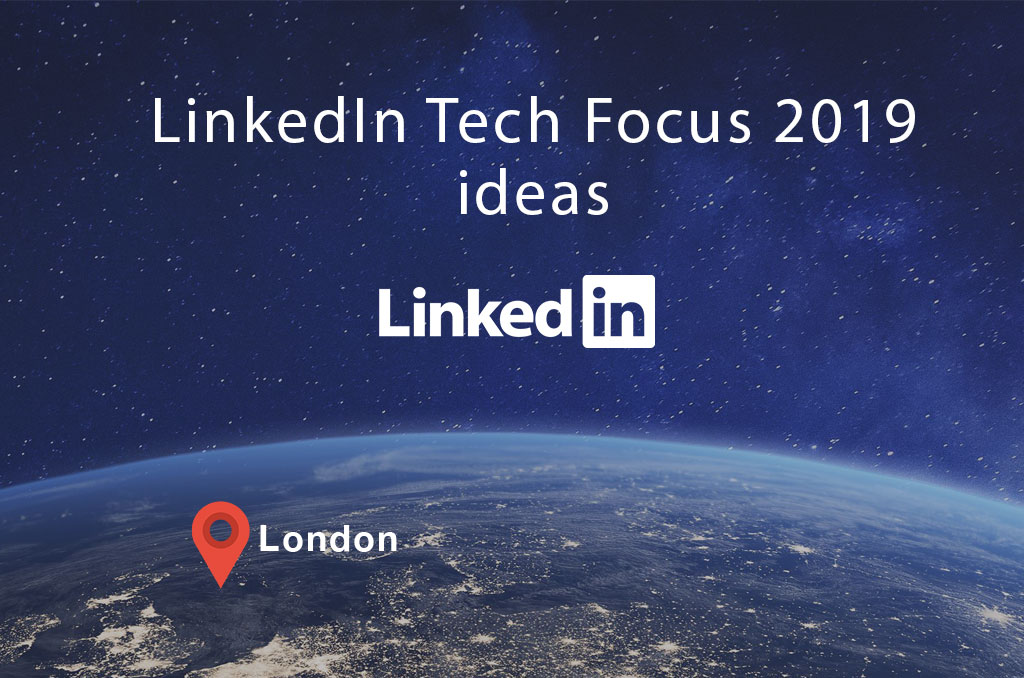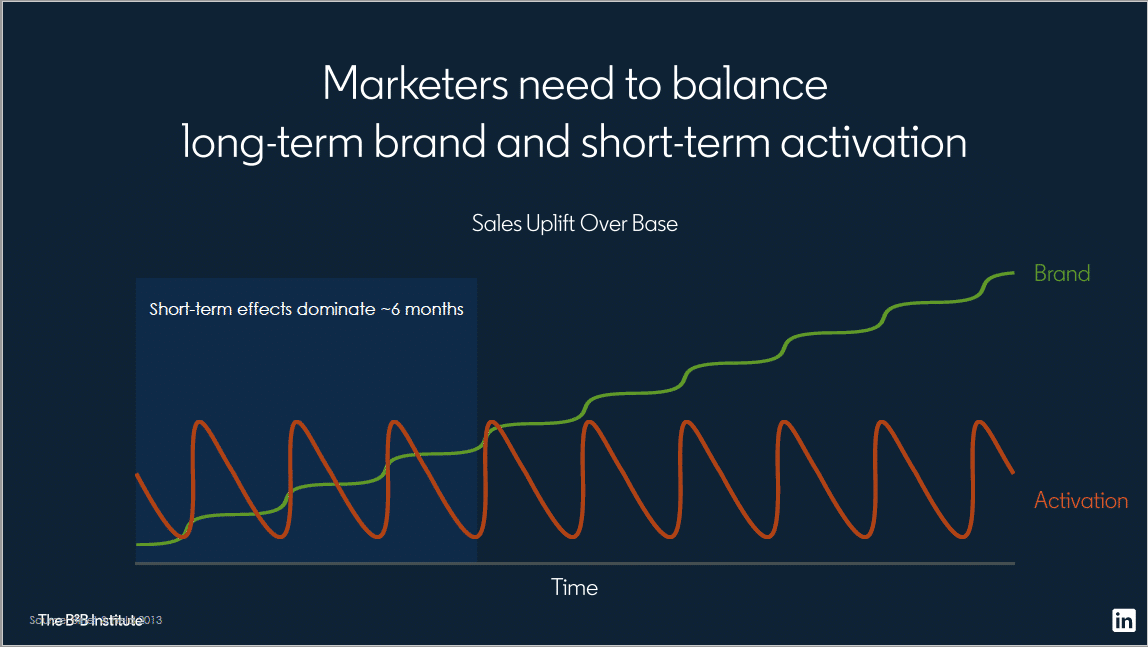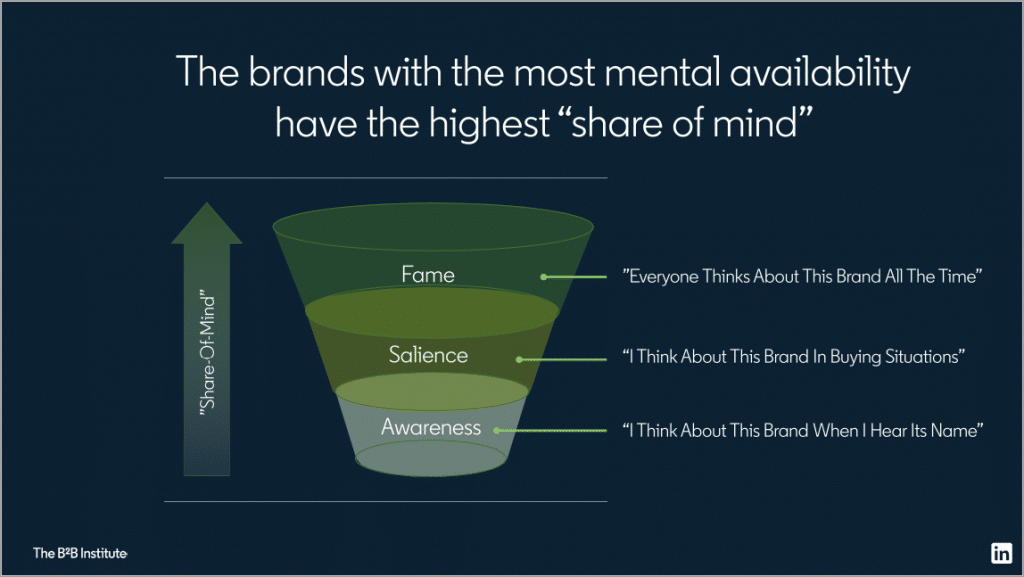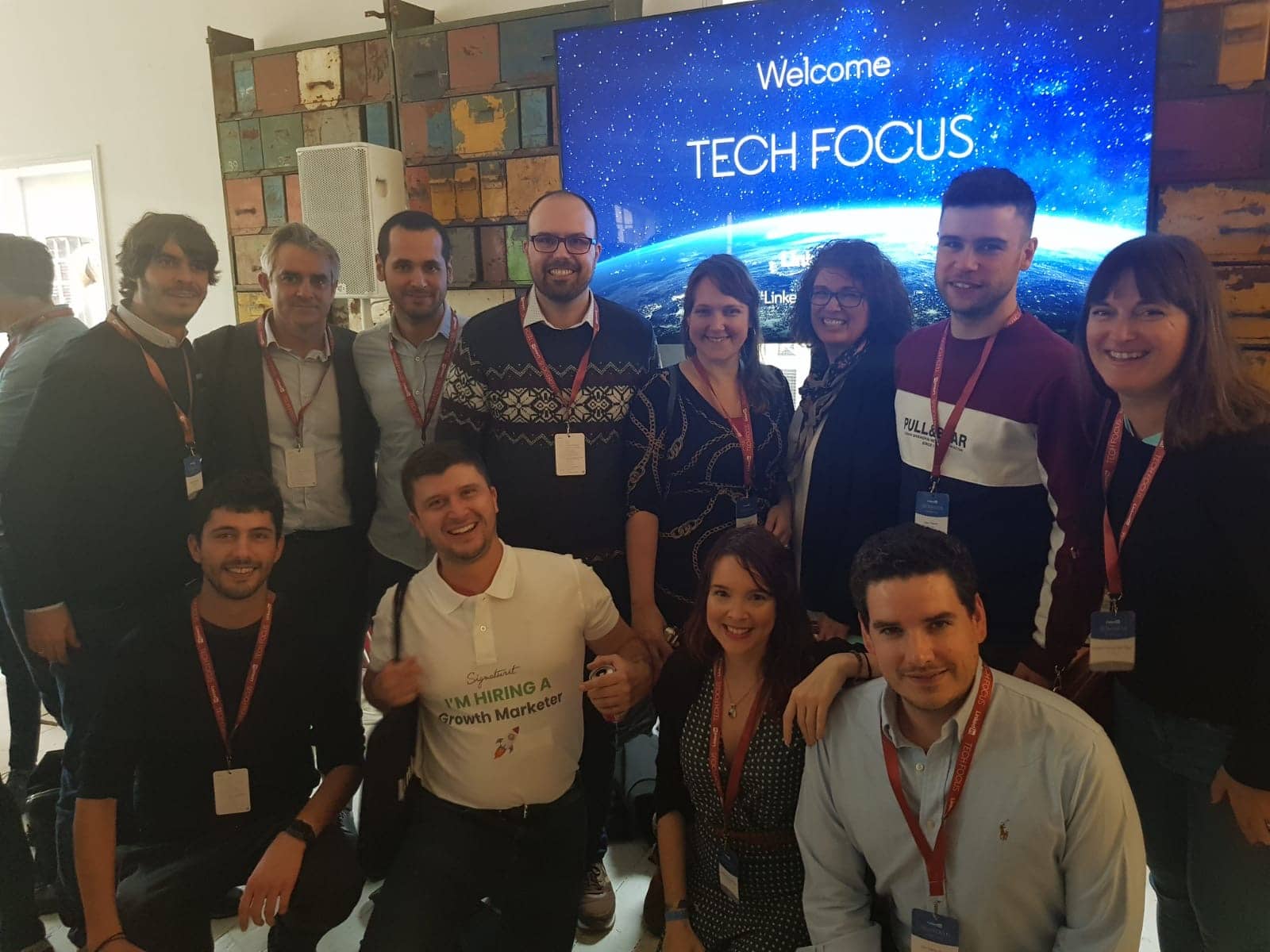LinkedIn Tech Focus 2019 ideas
 Oct 27, 2019 - Marcel Odena
Oct 27, 2019 - Marcel OdenaOn Thursday, October 17, 2019, LinkedIn organised an event for the technology sector in London called “Tech Focus”. I felt fortunate and honoured to be invited by the LinkedIn team, and the experience was totally worthwhile. All the speakers were highly impressive, both in what they said and in the way they explained themselves (one realises that effective public speaking doesn’t come naturally; you have to learn the techniques and practice all the time).
Of the many issues discussed, I would like to highlight the following ideas:
1. Lead Generation is fine for the short-medium term, but you have to invest in branding for the long-term
To generate a constant flow of sales in the future, your company has to invest in brand actions now. This idea came from Jon Lombardo, the Global Lead of the “B2B LinkedIn Institute,” who was brilliant in his explanation.

This slide illustrates the effect brand actions have on sales over time depending on the type of marketing actions we do, specifically:
- The red line shows the effect lead generation actions have on sales. We invest money in lead generation campaigns, and this translates into opportunities and sales. The disadvantage is that the sales dry up when we stop this type of campaign.
- The green line indicates the effect that branding actions have on sales in the long term.
Those of us who work in demand generation know that a monthly investment budget is provided and certain results are expected in return, typically relating to the number of qualified leads, opportunities, and sales. Once you crunch the numbers, you’ll inevitably be left with a tight budget so you must ask yourself:
“How should I invest in promoting the brand of my company/product with the limited budget I have?”
I think it’s an important question to keep asking ourselves because I’m sure we’ll eventually figure it out.
2. We must aspire to achieve more than just awareness
Another idea I really liked is to assess the different degrees of impact we can expect from our brand campaigns.
If someone asks you what the purpose of a branding campaign is, what would you say?
Awareness, right?
It’s a word that many of us have embedded in our brains, one that’s closely associated with branding. The idea is that we do a branding campaign, for example, we publish a few ads addressing the pain points of our potential customers in the hopes of capturing their attention (awareness).
Now, is awareness the most we can hope for?
The short answer is no; we have to aim higher. And that’s where the explanation of the great public speaker Peter Weinberg, the Global Lead at LinkedIn’s “The B2B Institute,” caught my attention.
So, the degree of impact that branding actions can have are categorized into these levels (“share of mind”):

Awareness: this is the minor state of branding action impact. Capturing the attention of potential buyers isn’t a bad thing, but we can certainly do better. As Peter said: “It’s better than nothing”. For example: if someone asks you, “do you know McDonald’s?” I’m sure your answer would be “yes,” and that you know they make hamburgers among other things. Well, this would be the lowest level of branding impact; someone mentions a brand and you “recognise” the name.
Salience: This state of impact was a great revelation for me, which consists of getting the user to associate your company or product with a category. Unlike the previous example, the question now would be: “What companies come to mind that sell hamburgers?” And the user’s response would be: “McDonald’s.” Now, note how the user hasn’t just associated McDonald’s with the “hamburger” category, but they’ve also put the company in a “shortlist” in their head.
Of course, there’s a big difference between getting the attention of the user and getting the user to associate your brand with a category.
Fame: This is the best state we can hope to achieve with our branding actions. It’s a state in which the user not only associates your brand with a category but also starts to worship or adore your brand. Take Apple as an example, who has managed to elevate its brand to the “fame” state by earning millions of fanatical customers who are passionate about the brand and its products.
Opinion
Well, after these talks we’re back to the same old routine. Our mantra remains more or less the same: get more leads, more opportunities, and more sales. But one thing has changed, at least in my mind. All the campaigns we do must have a clear objective on the horizon: to build a great brand. How? We’ll start finding out through practice.
Can you guys help me out with a couple of ideas?
Acknlowdgements
I’ll take this opportunity to express my gratitude to the entire LinkedIn team for inviting me to this event, especially to Luis Carlos Martin, Verónica Rodríguez and Laetitia Saint.
I am also very grateful to have had such an awesome day with the whole team of professionals that we met in London. It was such a pleasure to share those moments with you guys!




